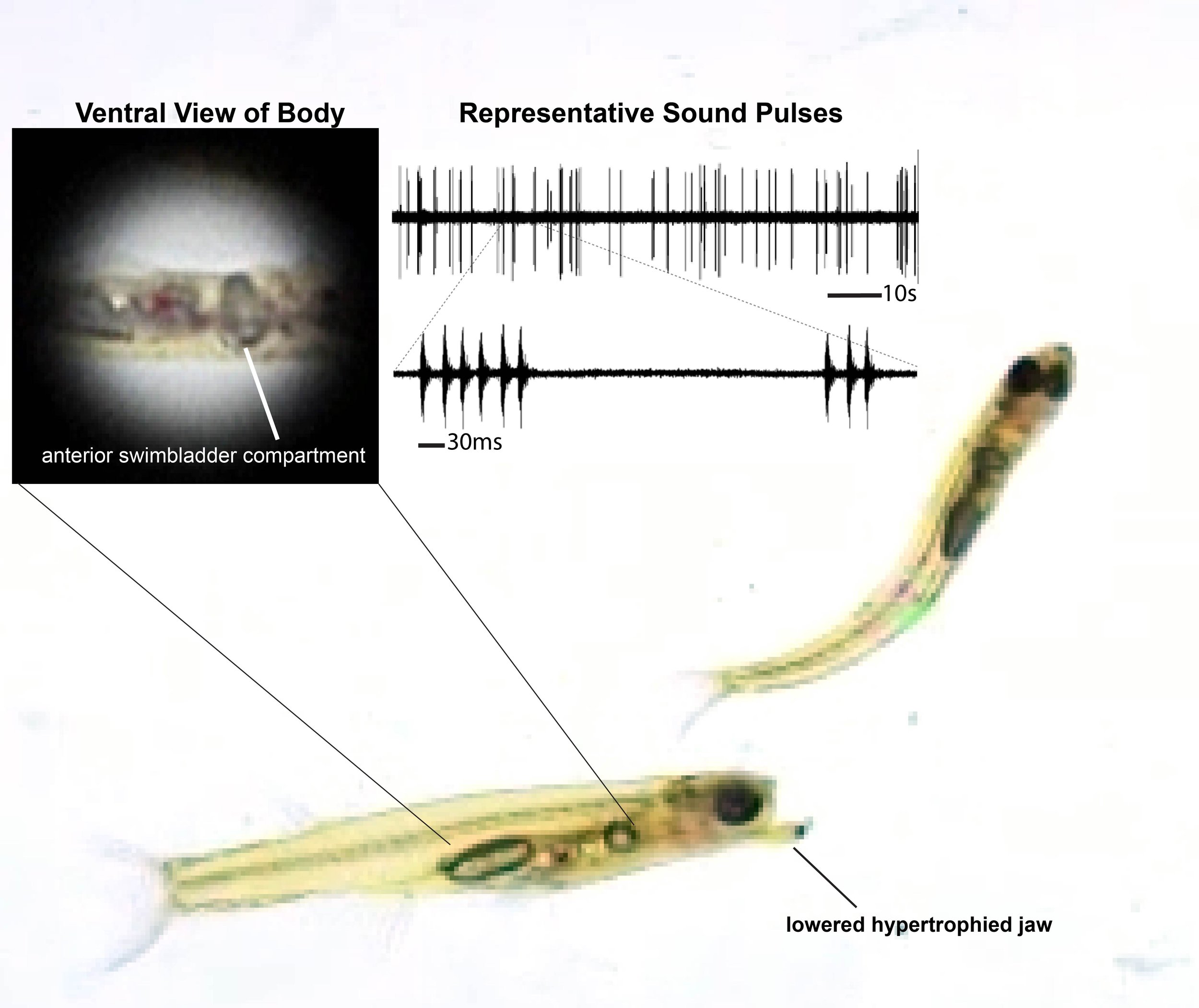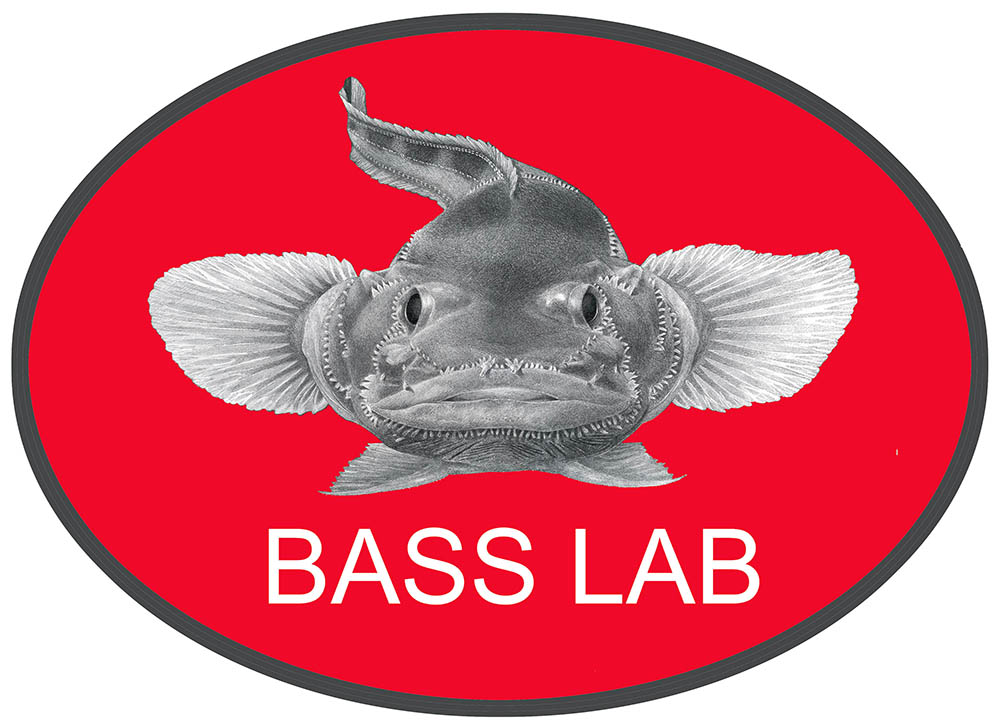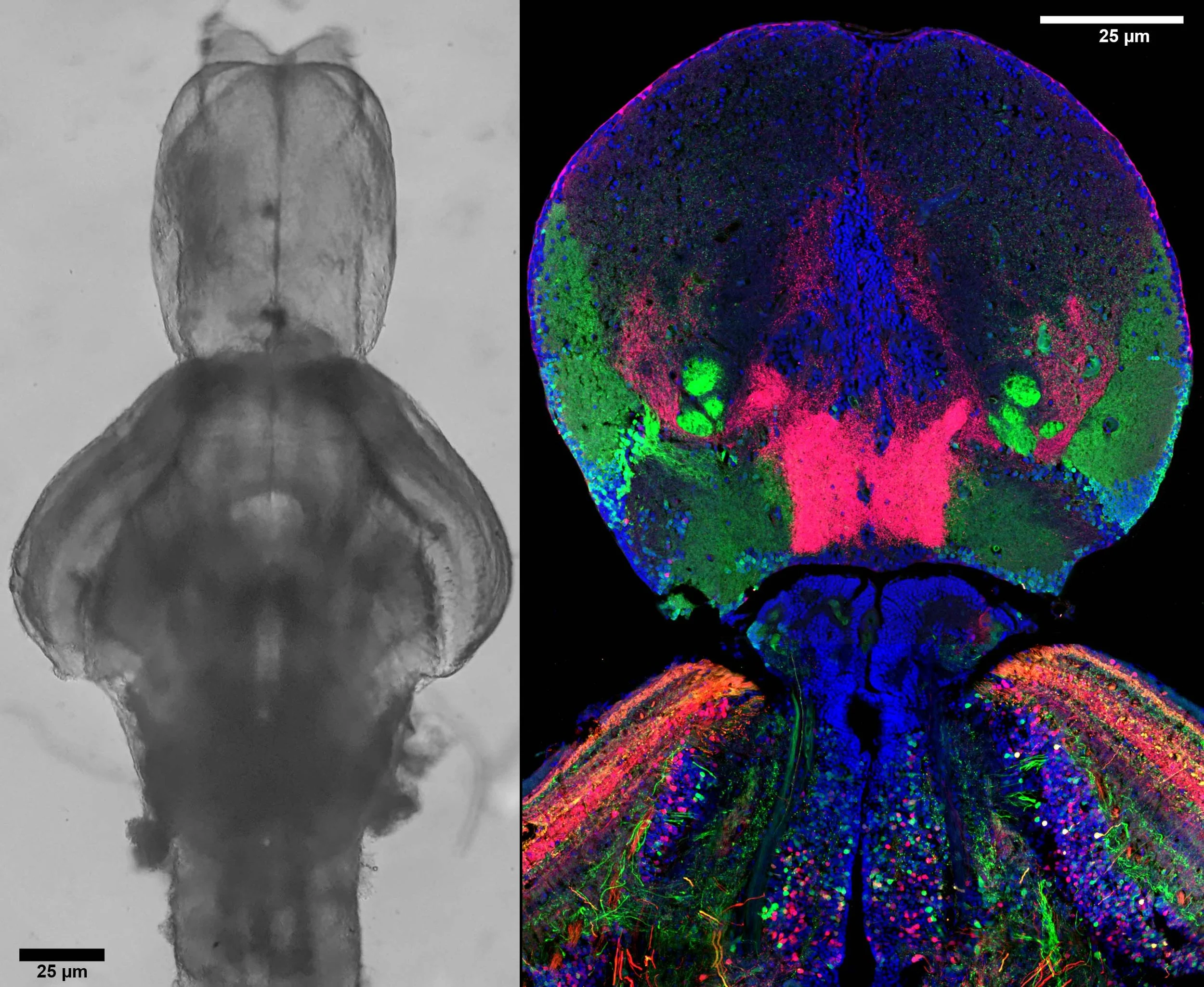Danionella fishes: a new model clade for neuroscience.
Why study Danionella? Our long-term goal is to use Danionella to test for evolutionarily shared forebrain networks activated during social interactions, and to use genetic approaches (CRISPR, optogenetics) to manipulate these networks at the cellular level to affect social behaviors. Especially important is that these miniature species of vertebrates remain transparent throughout their entire lives and make acoustic displays during aggression and possibly other social behaviors. They also have a close phylogenetic relationship to zebrafish (which are neither sonic nor naturally transparent as adults) permitting the adoption of microscopy and genetic tools for neuronal imaging and circuit manipulations pioneered in larval zebrafish, now brought to bear in one of the smallest living adult vertebrates. In an ongoing collaboration with Chris Xu, we have demonstrated that multiphoton microscopy offers full optical access through the entire depth of Danionella’s tiny, relatively transparent brain. Using third harmonic generation (a “free” signal creature by 3-photon excitation), we can map the entire brain at micrometer resolution, without the need for artificially introduced fluorophores. Danionella are also amenable to longitudinal imaging, allowing us to examine development of neuronal circuits throughout the lifetime of an individual animal. We and other labs have generated several transgenic lines including pan-neuronal expression of calcium indicators, opening the doors to brain-wide, cellular resolution imaging in an adult vertebrate.
Danionella dracula, the dracula fish

Other Danionella neuroscience labs currently focus on Danionella cerebrum, but our research program centers on Danionella dracula aka the “dracula fish.” We have provided the first extensive description of social behavior for any Danionella species, including evidence for multimodal, acoustic and postural displays by males during aggressive interactions near territories used for courting and reproduction. Only males are known to make sound and to have the “machinery” to do so. The postural display is a dramatic lowering of a hypertrophied lower jaw, revealing upper and lower fang-like protrusions; characters that are unique to male dracula fish among all the known Danionella species. We developed a resident-intruder assay that shows a strong influence of residency status and relative male size on acoustic and postural display rates, providing compelling evidence that these displays are an important component of resolving social conflicts. How variance in displays relates to the outcome of social interactions remains to be more thoroughly investigated in dracula fish as well as any other Danionella species. We are currently using high speed video, machine learning pose tracking and behavioral modeling to further investigate these dynamics.
What are the Benefits and Trade-offs for Miniaturization?
Aside from the advantages for brain-wide neuronal imaging, Danionella fishes offer a thrilling new opportunity to identify benefit cost trade-offs of miniaturization for development, sensory-motor function, and behavior. Danionella achieve their small size through paedomorphosis, a form of heterochrony that gained renewed attention with the 1977 publication of Stephen J. Gould’s opus, “Ontogeny and Phylogeny”. More specifically, Danionella exhibit progenesis, a type of paedomorphosis characterized by early sexual maturity coupled to truncated growth and development of somatic characters resulting in miniature adults. Danionella dracula adults do not fully develop roughly 60 bones that are found in adult zebrafish. In contrast, the skeleton of the Weberian apparatus, a set of bones connecting the swim bladder and inner ear that enhances hearing, is fully developed at a much earlier stage in dracula fish as compared to zebrafish. Is the Weberian apparatus functional at this early stage and does this confer some adaptive advantage to Danionella larvae? Evidence from several labs, including ours, show that Danionella appear capable of a wealth of social and cognitive behaviors. However, there is much to learn about the full behavioral and cognitive capabilities for any Danionella species. We are currently deciphering the neuroanatomy of Danionella dracula to understand if a developmentally truncated vertebrate with a miniature body possesses a similarly “truncated” brain.
Much remains unknown about the natural habitats and behaviors of Danionella. but there is a growing, collaborative Danionella community, genomic resources and transgenic lines, attracting interest from biologists beyond the field of neuroscience. Besides D. dracula and D. cerebrum, 3 other Danionella species with intriguing anatomical differences offer further opportunities to explore a variety of biological questions in this new model clade.



